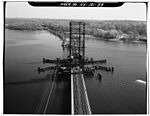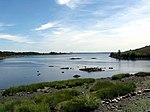Bartow–Pell Mansion
1842 establishments in New York (state)Carriage houses in the United StatesCarriage houses on the National Register of Historic PlacesHistoric American Buildings Survey in New York CityHistoric house museums in New York City ... and 12 more
Houses completed in 1842Houses in the BronxHouses on the National Register of Historic Places in the BronxMuseums in the BronxNational Historic Landmarks in New York CityNew York City Designated Landmarks in the BronxNew York City interior landmarksPelham Bay ParkPell familyTransportation buildings and structures on the National Register of Historic Places in New York CityUse American English from January 2020Use mdy dates from January 2020

The Bartow–Pell Mansion is a historic house museum located in the northern portion of Pelham Bay Park in the Bronx, New York City. A National Historic Landmark, it has one of the nation's finest Greek Revival interiors, and is the last surviving major mid-19th century country estate house in the Pelham Bay area.
Excerpt from the Wikipedia article Bartow–Pell Mansion (License: CC BY-SA 3.0, Authors, Images).Bartow–Pell Mansion
Orchard Beach Road, New York The Bronx
Geographical coordinates (GPS) Address Nearby Places Show on map
Geographical coordinates (GPS)
| Latitude | Longitude |
|---|---|
| N 40.871611111111 ° | E -73.805944444444 ° |
Address
Orchard Beach Road 1
10464 New York, The Bronx
New York, United States
Open on Google Maps








